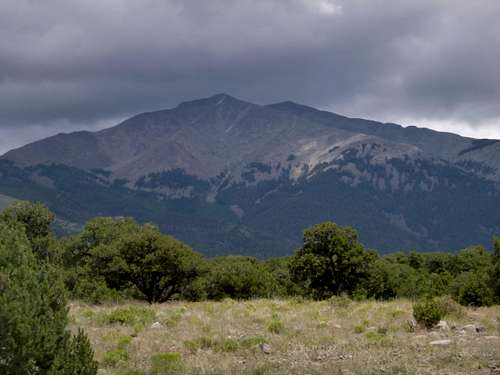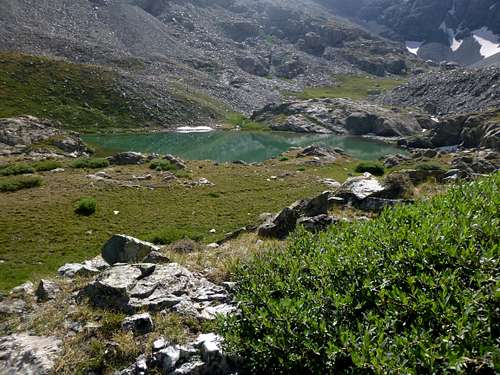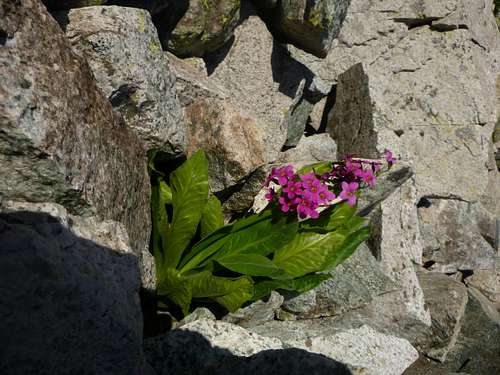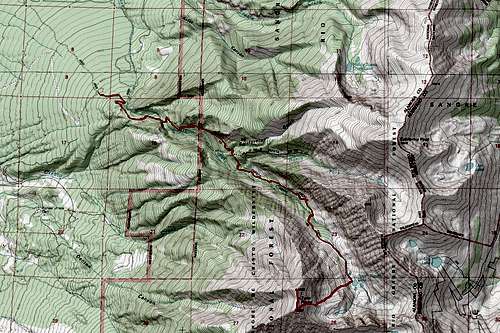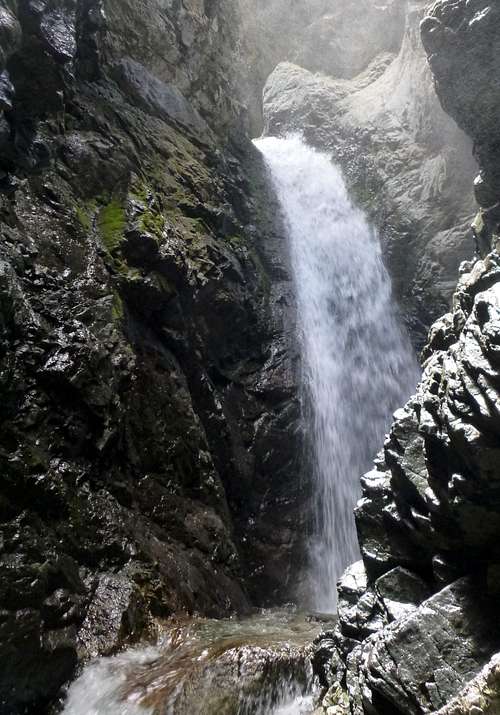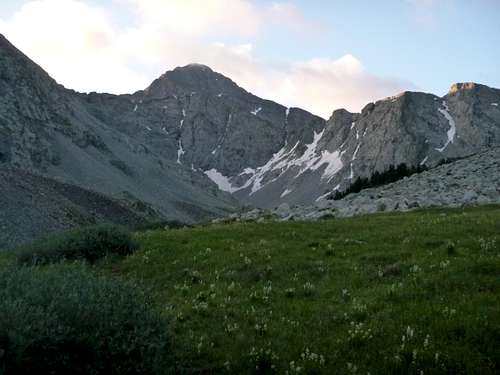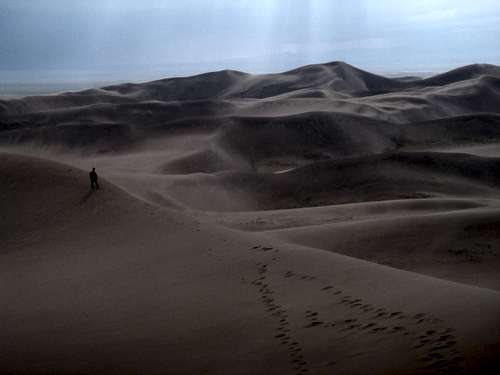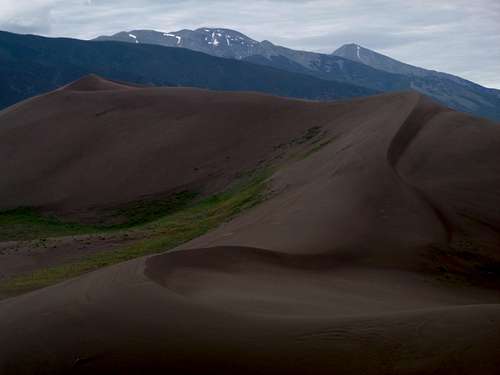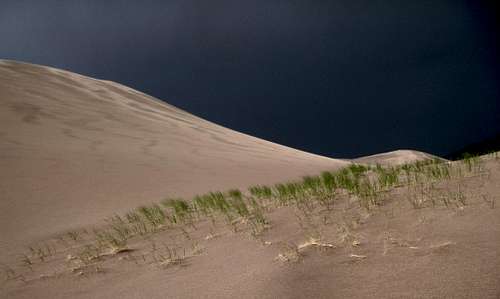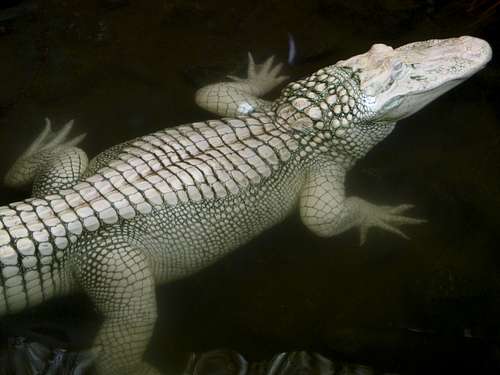|
|
Mountain/Rock |
|---|---|
|
|
37.58859°N / 105.51919°W |
|
|
Alamosa |
|
|
Hiking |
|
|
Spring, Summer, Fall, Winter |
|
|
13580 ft / 4139 m |
|
|
Overview
In addition to being a well known television show, Twin Peaks is the name of a number of different mountains spread throughout Colorado. The peak discussed here is found in the Sangre de Cristo Mountains, and is prominent looking south from the Great Sand Dunes National Park and may or may not be one of Colorado’s 200 highest peaks. The northern summit at 13,580 feet is listed as the 199th highest, largely because “T” comes before “U” in the alphabet. It has a south summit of 13,534 feet with the two summits separated by a shallow saddle of approximately 13,460 feet. Twin Peaks is found northwest of Blanca Peak and Ellingwood Point, and appears to be the highest peak whose entire extent is contained within Alamosa CountyThe South Zapata Lake Trail leads up to the vicinity of the summit and this is the means used for most ascents. Not far from the trailhead, it is possible to make a short detour into a narrow gorge to see Zapata Falls although this requires walking through the creek and could result in wet feet so might be better done at the end of the hike.
Getting There
The South Zapata Lake Trail and Twin Peaks can be accessed either from the South or West. To get there from the south, take Rt. 160 West from Fort Garland and follow signs towards Sand Dunes National Monument, turning north on Rt. 150. Continue north for about 12 or 13 miles until you see signs for the rough Zapata Falls access road on the east side of the highway. This same spot can be reached from the west by travelling east from just north of Mosca also on Rt. 150 until a T-intersection a few miles south of Sand Dunes National Park. Turn right and go three or so miles south on Rt. 150 to arrive at this same spot. Once here, go up the rough and rocky road 2.8 miles to a parking area. There are nice facilities including a campground here and it is accessible by passenger cars although the start of the road in particular is quite rocky.The trail itself goes past the waterfalls and then another 4.5 steep and rocky miles up South Zapata Creek drainage to South Zapata Lake where it is possible to climb west to the summit as described in the Eastern Slopes from South Zapata Lake route description.
Route
Most people ascend Twin Peaks using the South Zapata Lake trail to the lake. Once at the lake a steady but never terribly steep climb of 1800 feet in about 1.25 miles can be made up the eastern slopes of the mountain to the two summits. I have included details on this in the accompanying "Eastern Slopes from South Zapata Lake" route page. The total distance is 12 or 13 miles round trip with an elevation gain of 4,500 feet. The trail is rocky and has numerous steep sections but it is a well constructed trail. The upper section is pleasant being mostly on grasses and reasonably stable talus and rock.Red Tape
The area around Zapata Falls is state land and camping is not permitted within it except in the campground where nightly fees are $11 as of 2017. It is necessary to hike 1.5 steep miles or so to the edge of the forest service land in order to camp at an informal site. From this point up to South Zapata Lake, there are infrequent but nice campsites seen along the trail. The lake itself has nice camping opportunities but with an elevation of 11,900 feet could cause altitude issues if you are coming from the lowlands.When to Climb
Most people climb this peak in the months from June through September. There are several prominent ridges on the west side that could likely be used for loose but fairly safe winter ascents. I haven’t done this though or seen the peak in winter…Camping
Again, one can camp at the trailhead for $11, or along the trail at primitive sites once the Forest Service Land has been reached somewhat over a mile above the waterfall.Cool Stuff Nearby
As I noted above, Zapata Falls is found about a quarter of a mile up the trail. There are even regular benches to rest on leading up to the falls. Once at the creek, it is necessary to enter the water and progress up a narrow gorge to the waterfall. By midsummer, this might be possible without getting feet wet but probably count on getting things wet in going there.Great Sand Dunes National Park is located just north of the peak, and looks really nice from the summit. The park contains the highest sand dunes in North America and has a unique ecosystem within the dunes complete with six or so insect species found only there. Pretty cool and definitely worth a stop!
Although it is a commercial establishment, Colorado Gators Reptile Park is found north of Mosca on Rt. 17. It is an animal rescue and has many really neat snakes, lizards, tortoises, and of course gators including some albino ones, and is worth stopping by if you are into that sort of stuff. They have classes for those who need the thrill of gator wrestling…
External Links
Great Sand Dunes National Park
Colorado Gators Reptile Park
Zapata Falls Campground


